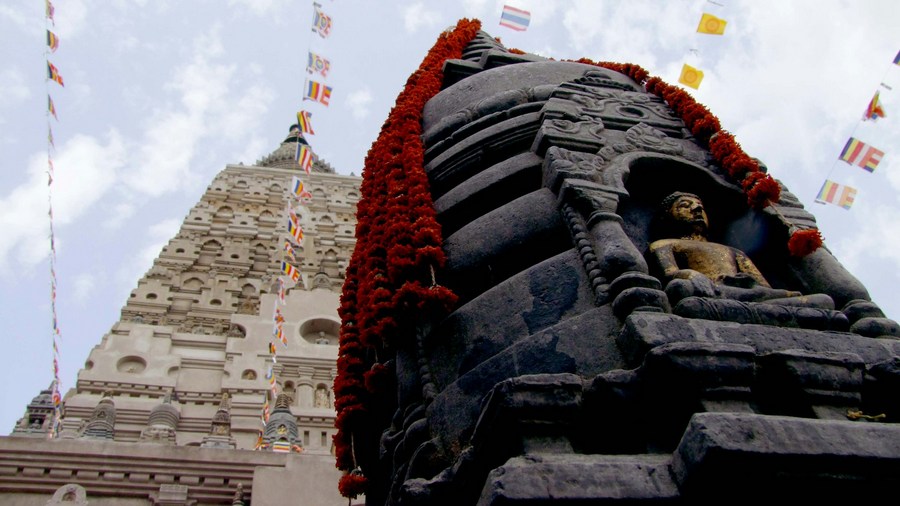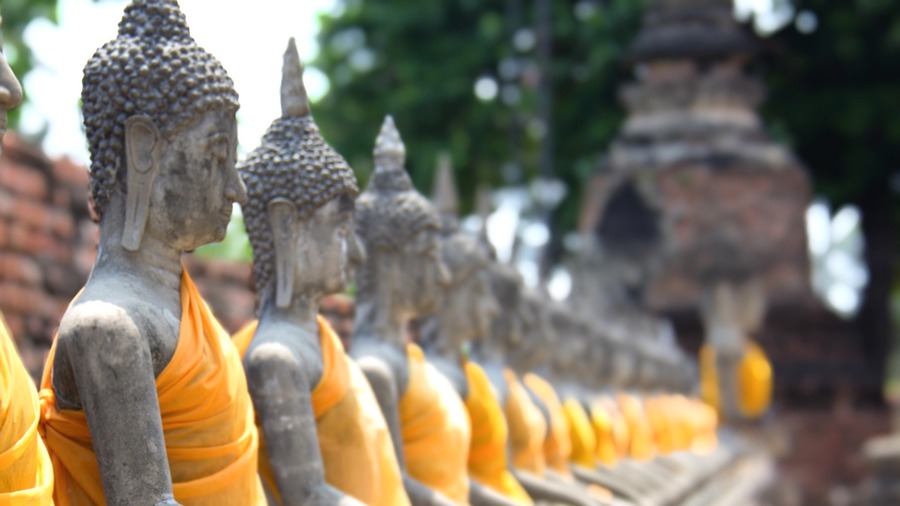At Savatthi. “Bhikkhus, there are these five aggregates subject to clinging. What five? The form aggregate subject to clinging, the feeling aggregate subject to clinging, the perception aggregate subject to clinging, the volitional formations aggregate subject to clinging, the consciousness aggregate subject to clinging.
“So long as I did not directly know as they really are the five aggregates subject to clinging in four phases, I did not claim to have awakened to the unsurpassed perfect enlightenment in this world with its devas, Mara, and Brahma, in this generation with its ascetics and brahmins, its devas and humans. But when I directly knew all this as it really is, then I claimed to have awakened to the unsurpassed perfect enlightenment in this world with … its devas and humans.
“And how, bhikkhus, are there four phases? I directly knew form, its origin, its cessation, and the way leading to its cessation. I directly knew feeling … perception … volitional formations … consciousness, its origin, its cessation, and the way leading to its cessation.
“And what, bhikkhus, is form? The four great elements and the form derived from the four great elements: this is called form. With the arising of nutriment there is the arising of form. With the cessation of nutriment there is the cessation of form. This Noble Eightfold Path is the way leading to the cessation of form; that is, right view … right concentration.
“Whatever ascetics and brahmins, having thus directly known form, its origin, its cessation, and the way leading to its cessation, are practising for the purpose of revulsion towards form, for its fading away and cessation, they are practising well. Those who are practising well have gained a foothold in this Dhamma and Discipline.
“And whatever ascetics and brahmins, having thus directly known form, its origin, its cessation, and the way leading to its cessation, through revulsion towards form, through its fading away and cessation, are liberated by nonclinging, they are well liberated. Those who are well liberated are consummate ones. As to those consummate ones, there is no round for describing them.
“And what, bhikkhus, is feeling? There are these six classes of feeling: feeling born of eye-contact, feeling born of ear-contact, feeling born of nose-contact, feeling born of tongue-contact, feeling born of body-contact, feeling born of mind-contact. This is called feeling. With the arising of contact there is the arising of feeling. With the cessation of contact there is the cessation of feeling. This Noble Eightfold Path is the way leading to the cessation of feeling; that is, right view … right concentration.
“Whatever ascetics and brahmins, having thus directly known feeling, its origin, its cessation, and the way leading to its cessation, are practising for the purpose of revulsion towards feeling, for its fading away and cessation, they are practising well. Those who are practising well have gained a foothold in this Dhamma and Discipline.
“And whatever ascetics and brahmins, having thus directly known feeling … and the way leading to its cessation … As to those consummate ones, there is no round for describing them.
“And what, bhikkhus, is perception? There are these six classes of perception: perception of forms, perception of sounds, perception of odours, perception of tastes, perception of tactile objects, perception of mental phenomena. This is called perception. With the arising of contact there is the arising of perception. With the cessation of contact there is the cessation of perception. This Noble Eightfold Path is the way leading to the cessation of perception; that is, right view … right concentration.
“Whatever ascetics and brahmins … As to those consummate ones, there is no round for describing them.
“And what, bhikkhus, are volitional formations? There are these six classes of volition: volition regarding forms, volition regarding sounds, volition regarding odours, volition regarding tastes, volition regarding tactile objects, volition regarding mental phenomena. This is called volitional formations. With the arising of contact there is the arising of volitional formations. With the cessation of contact there is the cessation of volitional formations. This Noble Eightfold Path is the way leading to the cessation of volitional formations; that is, right view … right concentration.
“Whatever ascetics and brahmins … … As to those consummate ones, there is no round for describing them.
“And what, bhikkhus, is consciousness? There are these six classes of consciousness: eye-consciousness, ear-consciousness, nose-consciousness, tongue-consciousness, body-consciousness, mind-consciousness. This is called consciousness. With the arising of name-and-form there is the arising of consciousness. With the cessation of name-and-form there is the cessation of consciousness. This Noble Eightfold Path is the way leading to the cessation of consciousness; that is, right view … right concentration.
“Whatever ascetics and brahmins, having thus directly known consciousness, its origin, its cessation, and the way leading to its cessation, are practising for the purpose of revulsion towards consciousness, for its fading away and cessation, they are practising well. Those who are practising well have gained a foothold in this Dhamma and Discipline.
“And whatever ascetics and brahmins, having thus directly known consciousness, its origin, its cessation, and the way leading to its cessation, through revulsion towards consciousness, through its fading away and cessation, are liberated by nonclinging, they are well liberated. Those who are well liberated are consummate ones. As to those consummate ones, there is no round for describing them.”
Read this translation of Saṁyutta Nikāya 22.56 Upādānaparipavattasutta: Phases of the Clinging Aggregates by Bhikkhu Bodhi on SuttaCentral.net. Or read a different translation on SuttaCentral.net or DhammaTalks.org. Or listen on SC-Voice.net. Or explore the Pali on DigitalPaliReader.online.
Or read a translation in Deutsch, বাংলা, Español, Bahasa Indonesia, 日本語, မြန်မာဘာသာ, Norsk, Português, Română, Русский, සිංහල, Slovenščina, ไทย, Tiếng Việt, or 汉语. Learn how to find your language.



